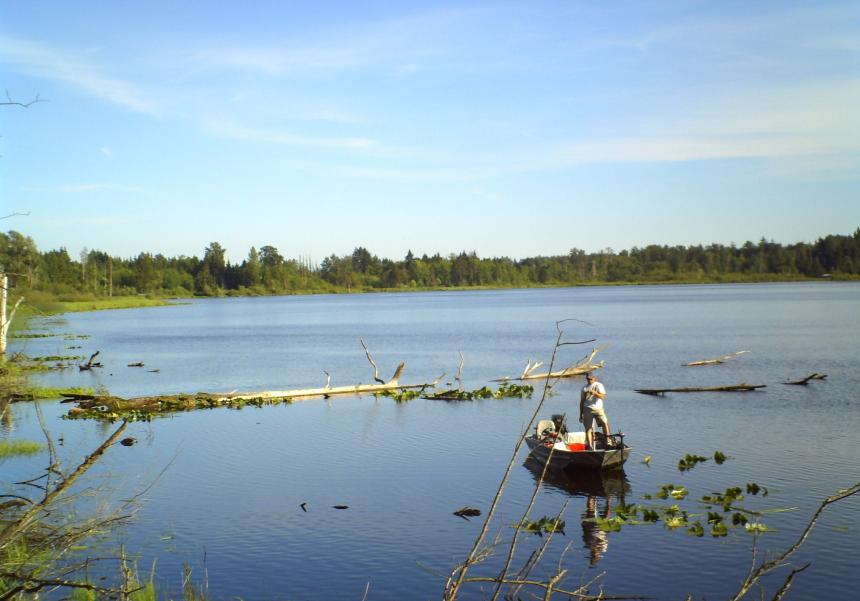Three miles east of Marysville. This lake offers opportunity for stocked Rainbow Trout and resident Largemouth Bass, Black Crappie, and Yellow Perch. Bullhead Catfish and Pumpkinseed Sunfish are also present.
The WDFW access on the west shore has a gravel boat launch, gravel parking area and toilet.
Two-pole fishing is allowed
Shoreline access: Good - WDFW access on western shore and fishing pier accessed from a county trail on the eastern shore.
Species you might catch
- Black crappie
- Bluegill
- Brown bullhead
- Coastal cutthroat trout (resident)
- Largemouth bass
- Pumpkinseed Sunfish
- Rainbow trout
- Yellow perch
Lake information
County: Snohomish
Acreage: 123.10 ac.
Elevation: 323 ft.
Center: 48.052035, -122.095196
Open in Google Maps
Catchable fish plants
| Stock Date | Species | Number Released | Number of Fish Per Pound | Facility |
|---|---|---|---|---|
Visit the Catchable Trout Plants page for a more detailed search of trout plants in this or other bodies of water. To view or download the source data for this table visit the WDFW Fish Plants dataset on the Washington State Open Data Portal
Fishing prospects calendar
Rainbow trout
Coastal cutthroat trout (resident)
Largemouth bass
Yellow perch
Black crappie
Bluegill
Pumpkinseed Sunfish
Brown bullhead
Photos
